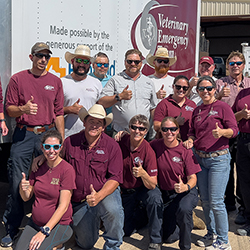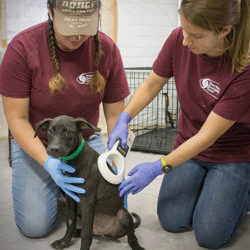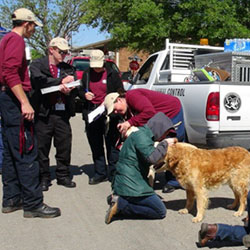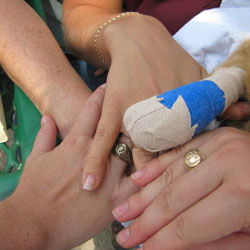The Texas A&M Veterinary Emergency Team (VET) plays a critical role in ensuring that animals impacted by disaster have a second chance at life. Fully equipped to provide veterinary care from triage and treatment of injured animals to working with community animal shelter partners, the VET provides animals and their owners hope for happy endings.
Helping Texans During Disasters
Our team is the only state-level veterinary medical care provider in the State of Texas Emergency Response Plan.
- Our team is the nation’s largest in terms of daily patient capacity and the most sophisticated in terms of the depth and breadth of veterinary medical care provided in a disaster situation.
- We support Texas A&M Task Force 1 on all in-state deployments, and we have the ability to provide veterinary medical support on out-of-state deployments, such as the Camp Fire in Butte County, California.
- Tent and trailer-based medical platforms worth approximately $1.5 million have been accumulated to support the faculty, staff, and senior veterinary medical student members of our team while on response deployments.
- VMBS faculty and staff members with a variety of specialties and advanced training are members of our team.
Our team’s combination of human capital and equipment is evidence of the prowess of the VMBS throughout the state of Texas and beyond during times of disaster.
- Our missions include:
- Veterinary medical support of Search & Rescue efforts
- Veterinary medical care of animals injured or who become ill as a result of a disaster
- Protecting the economic viability of agricultural animal industries through participation in foreign animal and emerging disease response
- Protecting human lives through participation in epidemic and pandemic disease response
Past Deployments
Smokehouse Creek Fire – 2024
We deployed to Canadian, Texas, in February 2024, just before the the wildfire was declared the largest in Texas history. 36 faculty, staff, and students from the VMBS, VERO, and the AgriLife Extension Disaster Assessment and Recovery (DAR) team worked across 7 counties. We visually checked and examined or treated just under 950 animals, including cattle, horses, donkeys, dogs, cats, a pig, and a goat, for injuries such as burns and smoke inhalation. And, we supported Texas A&M Task Force 1 & 2 search-and-rescue dogs with foot bandaging and decontamination.
Deployment Begins | Deployment Ends

Operation Border Health Preparedness (OBHP) – 2023
By the end of the week, we completed a record 1,022 veterinary visits in Raymondville, which almost doubled the number of patients we saw in 2022. “Willacy County is historically the poorest in Texas and the fifth poorest in the nation, with no veterinarian serving the community. But the people here love their animals as much as any other Texan and their animals deserve care.” — Dr. Wesley Bissett, former VET Director
Exercise Recap
Perryton Tornado – 2023
We deployed to Perryton in response to the devastating tornadoes that ripped through the Texas Panhandle community in June 2023. Our mission was to provide veterinary medical support for injured animals. Our 10 members and 5 AgriLife Extension Disaster Assessment and Recovery (DAR) agents were met in the Texas Panhandle by two additional members and by faculty, staff, and students from VERO in Canyon.
Deployment Begins
Hurricane Ian (Florida) – 2022
13 members of our team and 7 AgriLife Extension agents were deployed to Florida by Texas Gov. Greg Abbott in October 2022, in response to Hurricane Ian, one of the deadliest storms to hit Florida in modern history. During the deployment, we focused on providing veterinary medical support for FEMA urban search-and-rescue (USAR) teams that responded. Our team provided care to 38 human remains search dogs attached to the 22 FEMA USAR teams, including Texas A&M Task Force 1.
Deployment Begins | Deployment Ends
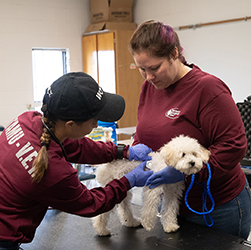
Operation Border Health Preparedness (OBHP) – 2022
We saw 505 animals, including dogs, cats, rabbits, and even two lambs, during our participation in OBHP in Raymondville. Previously known as Operation Lone Star, OBHP is organized by the Texas Department of State Health Services (DSHS) and gives state and local groups a chance to practice setting up and operating the kind of health clinics that could be used in a disaster response situation while also providing services to the local community. For a second year, we selected the Raymondville site because of the lack of nearby veterinarians.
Exercise Recap
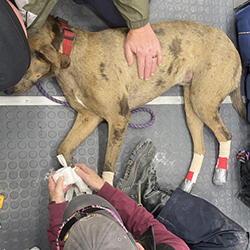
Eastland Complex Wildfire – 2022
We deployed in March 2022, to assist with relief efforts associated with the Eastland Complex Fire, a collective term for seven wildfires that burned in North Central Texas near the towns of Carbon, Rising Star, and Gorman. Our response efforts included responding to animal emergencies in the field, providing field care for search-and-rescue dogs, and providing veterinary medical support for local residents.
Deployment Begins | Deployment Ends
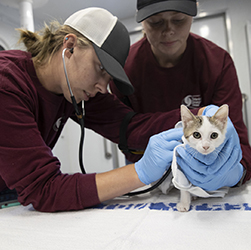
Operation Lone Star – 2021
Our team participated in this annual preparedness exercise for the first time in 2021. Started in 1999, Operation Lone Star, sponsored by the Texas Department of State Health Services (DSHS), gives emergency response teams a chance to set up and operate clinics that provide services to the nearby population. Our clinic in Raymondville was a popular stop during the exercise. “Willacy County currently does not have a veterinarian…, and pet health is important to keeping our community safe.” — Emilie Prot, DSHS Regional Health Director
Exercise Recap
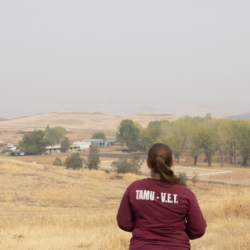
Butte County, California – 2020
Our team and AgriLife extension agents returned home on Oct. 24, 2020, after a month-long deployment to Butte County, California, where the team cared for more than 500 animals displaced by the ongoing wildfires and spread across 3 shelter locations. In total, more than 18 VET and AgriLife team members deployed. This was the second time we deployed out-of-state and to this location. “When we received the phone call from Texas A&M saying that they were responding to the request, we had a celebration in the operations center.” — Ryan Soulsby, local animal response incident commander
Deployment Begins| Update | Deployment Ends

Oregon Wildfires – 2020
In the Summer and Fall of 2020, wildfires killed 10 people and left 22 missing in central and southern Oregon, so in early September, FEMA responded by deploying urban search-and-rescue (USAR) teams to the area. Dr. Deb Zoran—one of just three incident support team (IST) veterinarians in the whole country—was charged with the care of the 12 USAR dogs that were deployed in the search and rescue effort. Having someone with her experience is a rarity for USAR teams, which is something Zoran has been at the forefront of trying to change.
Deployment Recap
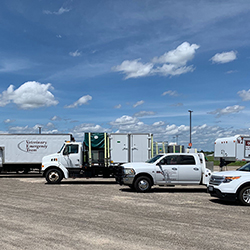
Hurricane Laura – 2020
After assessing Jefferson County for its veterinary medical needs following Hurricane Laura’s landfall, our team returned to College Station. We left College Station before sunrise, arrived in Jefferson County later that morning, and headed home the same day—making it the shortest deployment in the history of our team. “Jefferson County was prepared and the state of Texas was prepared; that’s what preparation does—it gets you through these times.” — Dr. Wesley Bissett, former VET Director
Deployment Begins | Deployment Ends
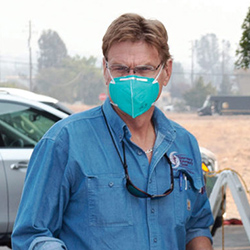
Panhandle COVID-19 Epidemiology – 2020
In May 2020, former VET Director Dr. Wesley Bissett was requested by the Texas Division of Emergency Management (TDEM) to serve as the operations section chief for the epidemiology unit working on case investigations and contact tracing of COVID-19 in the Texas Panhandle region. At the time, the Panhandle was one of the hottest spots in the country for COVID-19 transmission. Not only was this the first single-member deployment but also the first human medicine disaster response scenario for our team.
Deployment Recap
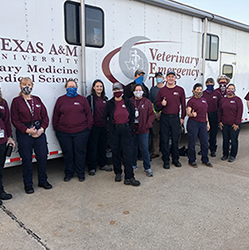
Polk County – 2020
In April 2020, 17 members of our team deployed to Onalaska, Texas, to serve citizens affected by a tornado that struck East Texas. In Polk County, we worked with community sheltering operations to provide veterinary medical care to animals injured in the storm, which killed 3 people and left up to 30 injured. The request for our team’s services was initiated by the veterinary medical community there through county officials as a result of the significant damage caused by the tornado, combined with the fact that most of the veterinary medical resources are around 20 miles from the impact area.
Deployment Begins | Deployment Ends
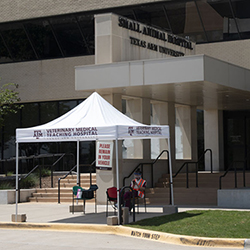
Texas A&M VMTH – 2020
In March 2020, we helped organize the COVID-19 response for our own Veterinary Medical Teaching Hospital (VMTH), putting to work our experience in shelter management as the hospital moved to curbside admissions and discharge processes as part of its scaled-back operations. In addition to new intake procedures for both small and large animals, the response included rerouting traffic flow around the buildings to allow clients to stay in their cars while their animals were cared for and establishing protocols for decontaminating pets that may have been in proximity to an ill owner.
Deployment Recap

Tropical Storm Imelda – 2019
We deployed in response to Tropical Storm Imelda, which severely flooded 13 Texas counties in September 2019. In rural Chambers County alone, approximately 100 cattle, horses, dogs, and cats were rescued and/or treated for floodwater-related injuries. An additional 4,000 head of livestock were supported on site. We diagnosed and treated many submersion injuries, which tend to adversely affect the skin and can lead to swelling and additional infection.
Deployment Begins | Deployment Recap
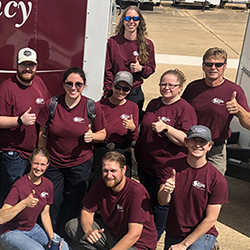
Cameron County – 2019
In September 2019, we helped care for more than 270 animals seized in the Rio Grande Valley at the request of the Texas Division of Emergency Management (TDEM). We supported county officials at the local shelter in managing the volume of animals, as well as providing veterinary medical care for malnutrition and treating other issues. Local officials are “…doing an incredible job of getting the resources they need to get these animals to a healthy state, and their goal is to adopt them into the community.” — Dr. Wesley Bissett, former VET Director
Deployment Recap
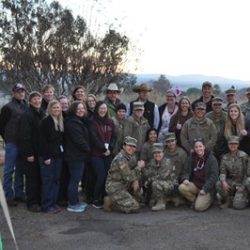
Camp Fire in Butte County, California – 2018–19
During the 29-day deployment, our team’s first outside of Texas, 12 members of the VET and seven AgriLife Extension agents from across Texas worked at the Del Oro Emergency Animal Shelter in Oroville, California, aiding with volunteers, inventory, and data management, as well as medical care to the many animals sheltered there.
Deployment Begins | Deployment Ends
Hurricane Harvey – 2017
We were called to respond in 10 jurisdictions located between Nueces County and the Texas-Louisiana border following Hurricane Harvey. Our team’s Hurricane Harvey response impacted more than 4,000 animals, including medical interventions, support provided to the emergency animal sheltering community, and animals that were positively impacted by community emergency plans authored by our faculty and students. Our response was described as the model for the nation by members of the federal and other state governments.
Harvey Update (PDF file)
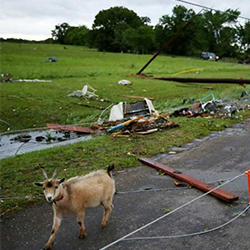
Canton Tornadoes – 2017
Our team deployed to Van Zandt County and spent three days at Canton Junior High, where we provided medical support for injured animals, both large and small, and helped reunite lost or missing pets with their owners. We arrived to conditions resulting from an F4 tornado that brushed one side of town and an F3 on the other. The F3 was on the ground for approximately 50 miles. Our team coordinated with local veterinarians and the Texas Animal Health Commission (TAHC).
Deployment Recap
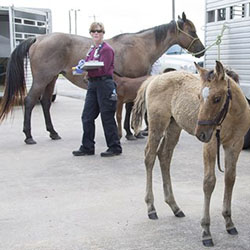
Fort Bend & Brazoria Counties – 2016
Early June 2016, brought devastating floods and tornadoes to Southeast Texas. We were deployed to Fort Bend and Brazoria Counties and spent two weeks treating more than 100 animals—including livestock, cats, ducks, horses, and dogs—in the flooded communities. Along with decontaminating animals that may have come into contact with toxic chemicals in the flood water, the team treated many other conditions, such as dehydration and submersion injuries.
Deployment Recap
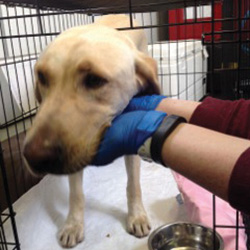
Memorial Day Floods – 2015
Rainfall changed the flow of the Blanco River into a wall of water that carried away houses, trees, cars, and anything else left in its path. After treating a lab found in a tree for minor injuries, the dog was scanned for a microchip. And, through the efforts of our team, Maggie was returned to Jonathan McComb—the only member of his immediate family to survive the tragedy. Later, our team was redeployed to provide search-and-rescue support to a team continuing with search-and-rescue from a base of operations in San Marcos. Due to the ongoing heat and humidity, we sent teams into the field to provide support.
Deployment Recap
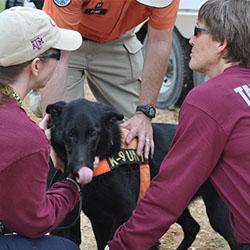
San Saba Deployment – 2014
A small group of our team members and veterinary students were called out to provide support for search-and-rescue dog teams involved in a long-standing criminal investigation. Rugged terrain, high ambient temperatures, and the potential for snake bites presented hazards for the dogs and their handlers. Excellent handler oversight and veterinary medical support allowed all of the dogs to complete their mission.
Director’s Message
West, Texas Explosion – 2013
We deployed to the West, Texas, fertilizer plant explosion in April 2013, with the mission of providing veterinary care for the search-and-rescue dogs of Texas A&M Task Force 1 as well as resident animals injured as a result of the blast. 5 faculty, 4 students, 4 technicians, and 5 support staff from the VMBS responded, utilizing 2 of the team’s mobile veterinary medical platforms and fo4ur vehicles.
Status Updates
Bastrop County Complex Fire – 2011
It was the most destructive wildfire in Texas history at the time, striking areas of Bastrop County in September and October 2011. 2 separate fires started on Sept. 4, 2011, as a result of strong winds caused by nearby Tropical Storm Lee, and merged into one large blaze that burned east of the city of Bastrop—devastating a significant portion of the Lost Pines area.
Status Updates





